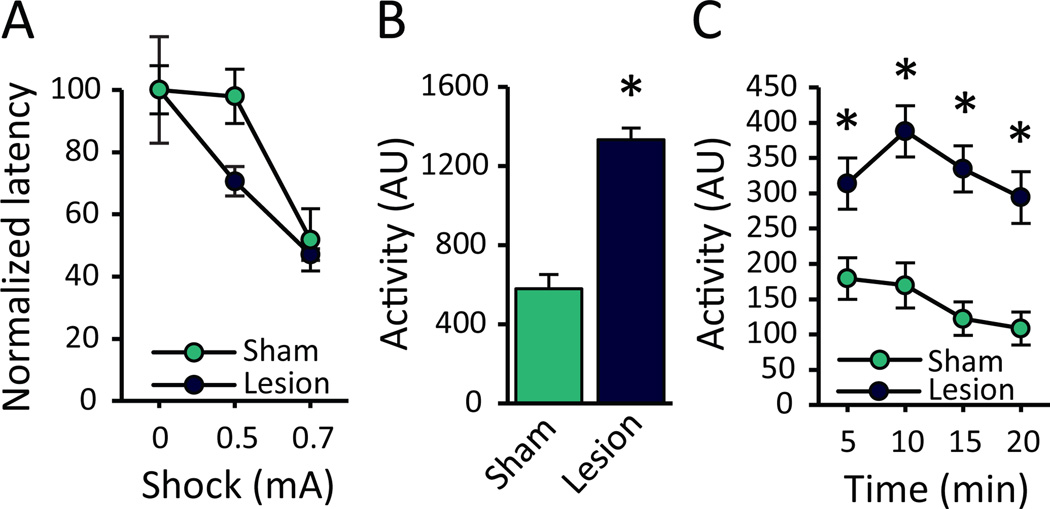Figure 3.
RMTg lesions produce hyperactivity without impairing sensorimotor responses to footshock. (A) RMTg- and sham-lesioned rats (n=6) were placed in a two-chamber shuttle box and tested for latency to escape a shock-paired chamber to an adjacent unshocked chamber. To account for differences in baseline activity (Figure S2), each rat’s data was normalized to its own baseline escape latency (0mA). Increasing shock intensities caused all rats to escape to the unshocked chamber faster; notably, RMTg lesioned rats were not impaired in shock escape, and indeed showed a non-significant trend toward faster escapes. (B) Over a 20-min test session in a novel operant chamber (n=4, 8), RMTg-lesioned rats were significantly more active, and (C) this lesion-induced hyperactivity persisted over the course of the entire test session. AU: arbitrary units; *p<0.05

